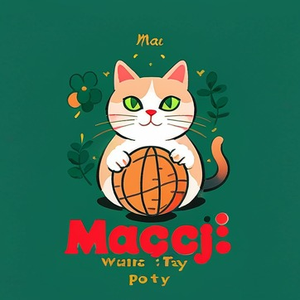Search
1/7
S$1.36 - 1.62
S$2.72 - 3.24Save up to 50%
Rainbow Toy Ball Cat Solid Elastic Ball Pet Supplies Kitten Puppy Ball Toy Cat Ball EVA Floating Water
Sold by MagicPetToy
Select options
Select
Shipping
From S$1.49
Est. delivery by Apr 19 - Apr 24
Specifications

MagicPetToy
438 items
About this product
- Country Of Origin:Mainland China
- Pet Supplies Type:Ball/Chaser
Product description
A must-have rainbow toy ball for cute pets
•Name: Rainbow Ball
•Material: EVA
•Product category: chew toys
•Weight: 10G
•Color: rainbow
Product desciption:
•Brilliant colors🌺: With rainbow-like bright colors, it instantly attracts pets' attention and stimulates their desire to play.
•Full of elasticity💯: Made of high-quality materials, it has good elasticity. No matter how the pet is patted or chased, it can rebound quickly, making play more interesting.
•Moderate size😄: Reasonably designed, the size is suitable for pets to grab and bite, making it easy for them to play as much as they want.
•Safe and non-toxic💖: After strict testing, it is non-toxic and harmless, so your pet can play and bite with confidence.
•Interactive entertainment✨: It is an excellent tool for you to interact with your pets. Through the game of throwing the ball and catching the ball, it can enhance the relationship and tacit understanding between you and your pets.
•Durable and bite-resistant👑: Sturdy and durable, it can withstand the bite force of pets and frequent play, and is not easily damaged.
Precautions for use🔔:
•Before using a toy ball on your pet, inspect the ball for damage, cracks, or sharp edges. If so, do not use it on pets to avoid causing harm.
•Choose a toy ball that suits your pet's size and bite force. For small pets or puppies, balls that are too large or too hard may not fit properly and could cause them to have difficulty swallowing or cause injury.
•When you play throwing and catching a ball with your pet, pay attention to the safety of the surrounding environment and avoid your pet from colliding with furniture or other objects while chasing the ball.
•Do not throw toy balls out of reach of pets to prevent accidental injuries caused by excessive jumping or climbing.
•After each use, check the toy ball for dirt or saliva residue and clean it promptly to maintain hygiene.
•If your pet has a habit of chewing toys, pay attention to whether it bites off small pieces of ball material and swallows them. If this happens, stop it immediately and replace the toy.
•Do not let pets play with toy balls alone for a long time to prevent them from swallowing them or causing other dangers.


Explore more from MagicPetToy

4.9
390sold
S$2.99
S$3.99
![[CHEAPEST] [SG STOCK] Foldable Cat Tunnel Cat Interactive Toy](https://p16-oec-sg.ibyteimg.com/tos-alisg-i-aphluv4xwc-sg/8ffeeb439a4a4bbf981ce0c6c41cf4c9~tplv-aphluv4xwc-crop-webp:678:676.webp?dr=15592&from=2378011839&idc=my2&ps=933b5bde&shcp=e1be8f53&shp=8dbd94bf&t=555f072d)
![[CHEAPEST] [SG STOCK] 2-in-1 Cat Toy Teaser & Laser !](https://p16-oec-sg.ibyteimg.com/tos-alisg-i-aphluv4xwc-sg/8802e6f42b7f4b778438efdccc8729ba~tplv-aphluv4xwc-crop-webp:790:998.webp?dr=15592&from=2378011839&idc=my2&ps=933b5bde&shcp=e1be8f53&shp=8dbd94bf&t=555f072d)


No more products
Open TikTok




































